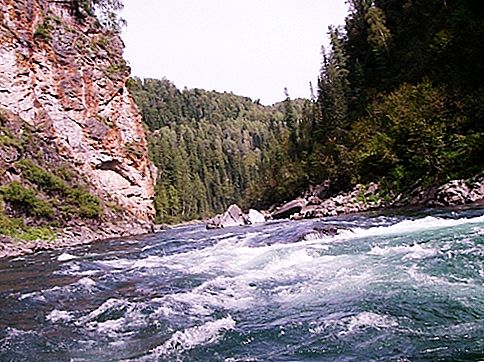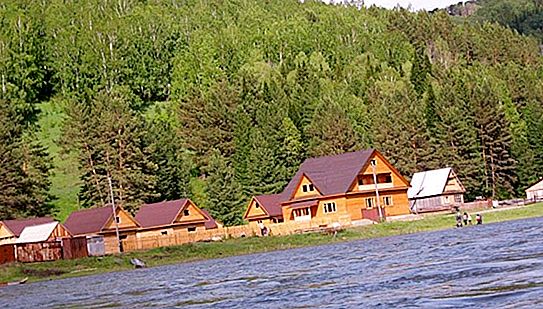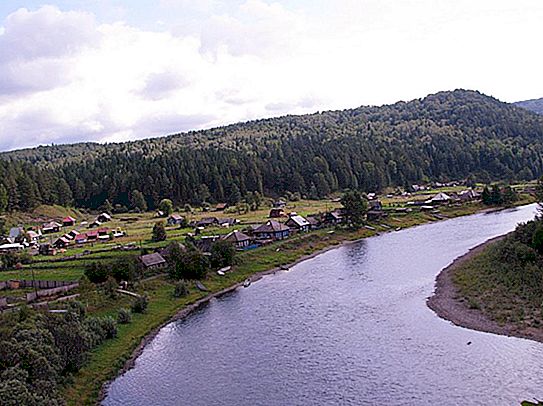One of the main natural resources of this region is the rivers flowing from south to north and belonging to the Arctic Ocean basin. The main part of the territory of the Krasnoyarsk region is occupied by the rivers of the Yenisei basin, the rest - by the rivers of the Ob, Pyasina, Taimyr and Khatanga basins. Of course, the main river of the region is the Yenisei, often called the "brother of the ocean."
Among the many reservoirs of Siberia there is the Kizir River. About her will be discussed in this article.

Brief information about the region
Water resources of the region are represented by swamps, underground sources, lakes, rivers and seas. From the north, the territories of the Krasnoyarsk Territory are washed by the waters of the Kara Sea and the Laptev Sea, creating many bays, including such large ones as the Yenisei, Khatanga, Taimyr and Pyasinsky.
Water bodies of the Krasnoyarsk Territory is one of the main wealth of Siberia. The tributaries of the largest river in Siberia (Yenisei) are the Angara, Lower and Podkamennaya Tunguska, Khantayka, Kureyka, Sym, as well as a large number of small rivers. There are rivers in this region that belong to the basins of other large bodies of water. The Chulym flows into the Ob River, and the river. Khatanga, Taimyr and Pyasin carry their waters to the seas: Laptev and Kara.
Kizir River, Krasnoyarsk Territory
This Siberian reservoir of the Asian part of Russia is the right tributary of the Kazyr River, belonging to the Yenisei basin.
The name of the river comes from the word "kizir", which is translated from the Khakass language as "cutting."

In the upper reaches (on the site of the Fourth threshold), the river flows along the canyon, cutting a rather narrow passage (width - from 3 to 5 meters) between the rocky shores. Geographically, the river is located in the Eastern Sayan Mountains. It is the largest tributary of the river. Kazyr (one of the components of the Tuba River). Its length is 300 kilometers, the area of the river basin is more than 9000 square meters. km The river begins in the Kryzhina ridge, then flows along a narrow valley (upper), and then in the lower reaches it splits into many branches. In the upper river has several rapids.
The average annual water flow in the area of the village of Imissky is 251 cubic meters. meters per second. The Kizir River freezes in November, and it opens only at the end of April.

The nature of the currents and tributaries
The river begins at the Mezhdurechnoye Lake, located in the central part of the Eastern Sayan Mountains, in the border area with the Irkutsk Region. The river quickly gathers strength and speed, and at the confluence points with its right-bank tributaries (the First and Second Fomkin rivers) it already becomes suitable for sports rafting. The next major tributary is the Kinzelyuk River. This is followed by the small rivers Birch, Shinda, Nitschka and Jeb. Kizir has no left-bank large tributaries.
Almost throughout its length, the reservoir carries its waters through the territory of the Kuraginsky district.
Settlements and the importance of the river
Almost all settlements are located in the lower river. These are the villages of Zhuravlevo, Imisskoye, Ust-Kasp, Cordoba and others. In the upper reaches you can find only guest houses and winter houses, the last of which was built at the very source, not far from the mouth of the Lednikovy brook.
Previously, the Kizir River was used for mole rafting of the forest. Today, it attracts fishermen, lovers of rafting on the river and travelers who use casting to the upper reaches of the river for further advancement to such interesting natural sights as the Kinzelyuksky waterfall, Stalnova glacier, Grandiose peak, etc. Thanks to this, the local residents have a well-developed service for the delivery of fishermen and tourists on motor boats in the upper river.






